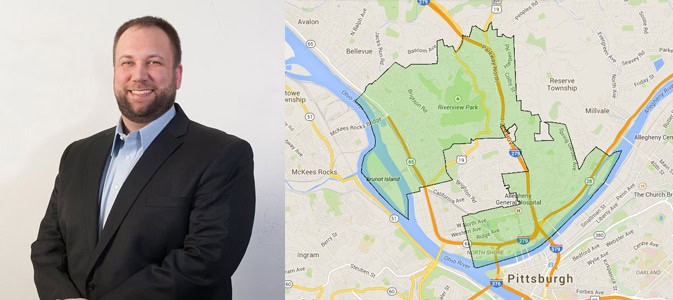District 1: Bobby Wilson responds to BikePGH Candidate Survey
District 1 Candidate Bobby Wilson
1. Do you use a bicycle (or walk) in the city? If so, for what purposes (commuting, recreation, errands, exercise) and how often? Do you have any favorite places to ride or walk?
I take public transit to work in Oakland and on nice days I walk home from downtown to Spring Hill. My wife and I are very excited about all of the added biking infrastructure. Last summer, we biked to Washington D.C. from our house by way of the Great Allegheny Passage and the C&O Canal Trail. We also love Riverview Park for all the great hiking trails that exist moments away from our house.
2. What roles do you think city council can play in making cities safe, accessible and friendly for biking and/or walking?
I believe city council should take an active role in advocating and ensuring that neighborhoods are strengthened by its infrastructure. By making the complete streets design a priority for renewed streets and connecting our bike trails to on-street bike lanes, we can begin to connect our neighborhood business districts to our parks and recreational venues.
3. How can improved biking and/or walking benefit your district? Are there any specific projects that you would like to see accomplished or are in the works that you’re excited about?
There are many ways that everyone benefits in a complete streets design effort. Even people that park their car need to cross the street. Connecting neighborhoods by bicycle lanes gives business owners access to clientele that may not have come otherwise. I’m excited about the East Street bike lane project that the Northside Bike Ped Committee has pushed for. This project will eventually connect Observatory Hill to the rest of Pittsburgh in a safe and sensible way.
4. In your district, what particular problem spots for pedestrians and/or people on bikes that you’d like to see addressed?
The most obvious spot is where the Allegheny Commons Trail (parallels North Avenue) ends abruptly at one side of Federal Street and starts again at the other side of the street without any easement of the curb or crosswalk with safety signage. Also, there are multiple intersections that could protect pedestrians by installing curb extensions that increases visibility. I will work with Bike Pittsburgh to make sure increased visibility and pedestrian safety, such as curb extensions, do not cut off bike lanes in the process.
5. Do you have any ideas on how the city can better maintain, fund, and fix our public steps, an important piece of our pedestrian infrastructure?
Funding for infrastructure is often tight. By collaborating with the growing youth employment program, young residents can learn vocational skills while being outside, experiencing their neighborhoods in a new way. Previous partnerships, such as one with the United Steelworkers and GTECH Strategies, have empowered youth to take active roles on improving access to Pittsburgh’s hillsides. Also, the city does a great job at accommodating the Pittsburgh Marathon with new road paving and line painting on and around the racecourse. The same care should be taken towards our steps. By bringing more attention to these stairways, perhaps through multi-stage races like the Dirty Dozen for stair climbing, we can attract funding to these public steps for decades to come. The Manitou Incline repairs in Colorado Springs are a great example of a fitness challenge that seeks demand for funding.
6. Aggressive and drunk driving seem to be problematic throughout the city. What steps can Council take or advocate for to address these life-threatening issues?
We need better access to the data from police reports that involve cyclists and pedestrians. City Planning and the Department of Public Works should be the driving force to streamline reports generated by the police. More data is needed as well. Reports are only made when an ambulance or a tow truck is called, thus reducing the amount of information that can be collected for bike/ped accidents. By implementing increased reporting and streamlining the data through city departments that have an interest in improving infrastructure, we can begin to have a real discussion that is data-driven. This should move the conversation to constructing protected bike lanes throughout the city, especially in the increased areas of risk, protecting bikers from all motorists, drunk or sober.
7. In conclusion, why do you think people, who care about issues involving biking, walking, and the built environment, should vote for you?
When it comes to biking throughout the city, I’ve been fortunate. I have an older cousin that was a bike messenger; he showed me the way around the city’s streets when I was 15 years old. Cycling has been a way of life for me and my wife and I plan to execute the complete streets design at every possible opportunity. I will look towards Bike Pittsburgh for guidance on multimodal improvements for neighborhoods and I will give the Northside Bike/Ped Committee a seat at the table for the capital budget.

